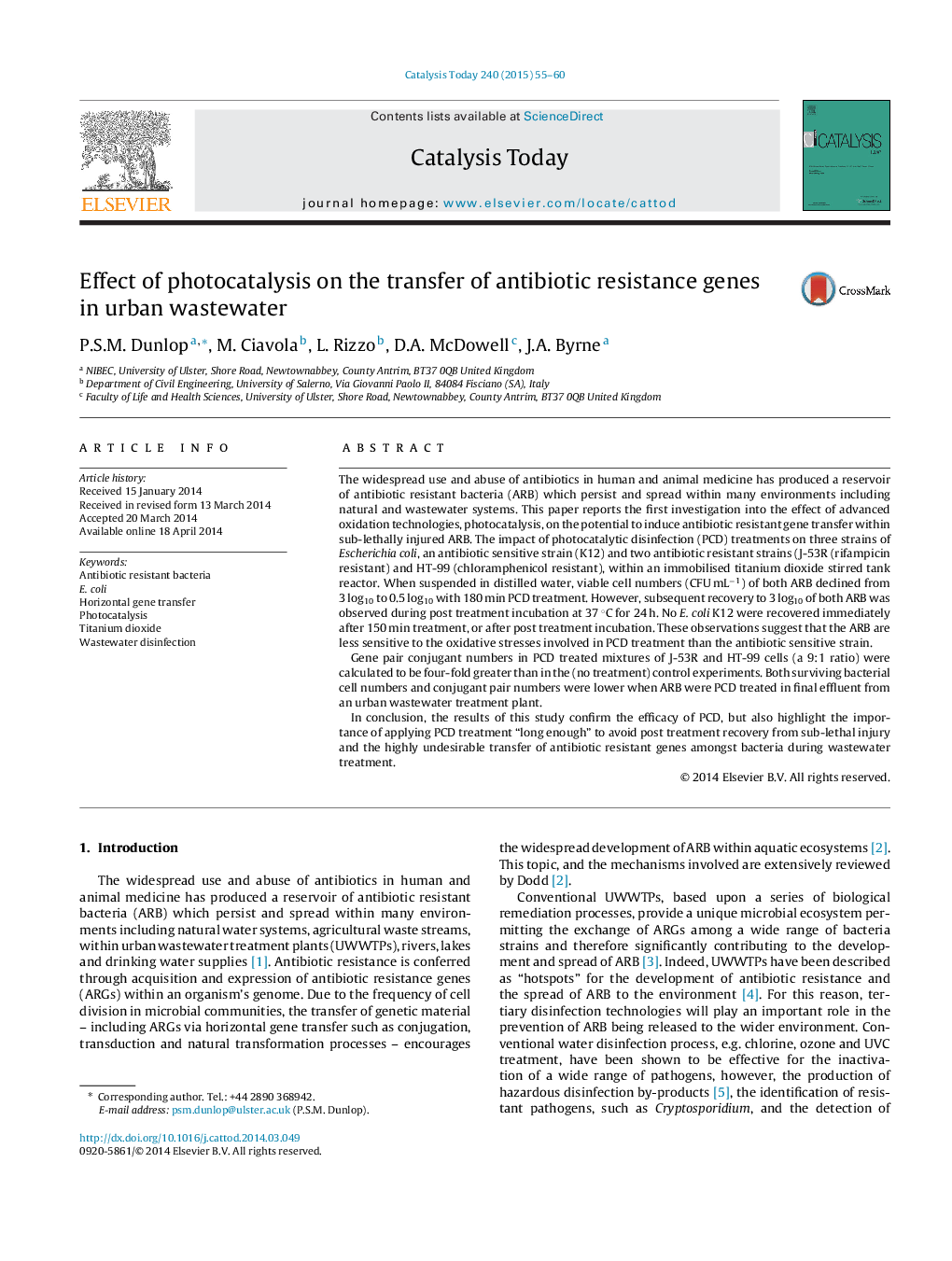| Article ID | Journal | Published Year | Pages | File Type |
|---|---|---|---|---|
| 54427 | Catalysis Today | 2015 | 6 Pages |
•Increased photocatalytic disinfection (PCD) time is required to inactivate antibiotic resistant E. coli.•Sub-lethal stress induced by PCD increased antibiotic resistance gene (ARG) transfer among E. coli.•The components of waste water effluent reduced PCD efficacy and decreased ARG transfer.
The widespread use and abuse of antibiotics in human and animal medicine has produced a reservoir of antibiotic resistant bacteria (ARB) which persist and spread within many environments including natural and wastewater systems. This paper reports the first investigation into the effect of advanced oxidation technologies, photocatalysis, on the potential to induce antibiotic resistant gene transfer within sub-lethally injured ARB. The impact of photocatalytic disinfection (PCD) treatments on three strains of Escherichia coli, an antibiotic sensitive strain (K12) and two antibiotic resistant strains (J-53R (rifampicin resistant) and HT-99 (chloramphenicol resistant), within an immobilised titanium dioxide stirred tank reactor. When suspended in distilled water, viable cell numbers (CFU mL−1) of both ARB declined from 3 log10 to 0.5 log10 with 180 min PCD treatment. However, subsequent recovery to 3 log10 of both ARB was observed during post treatment incubation at 37 °C for 24 h. No E. coli K12 were recovered immediately after 150 min treatment, or after post treatment incubation. These observations suggest that the ARB are less sensitive to the oxidative stresses involved in PCD treatment than the antibiotic sensitive strain.Gene pair conjugant numbers in PCD treated mixtures of J-53R and HT-99 cells (a 9:1 ratio) were calculated to be four-fold greater than in the (no treatment) control experiments. Both surviving bacterial cell numbers and conjugant pair numbers were lower when ARB were PCD treated in final effluent from an urban wastewater treatment plant.In conclusion, the results of this study confirm the efficacy of PCD, but also highlight the importance of applying PCD treatment “long enough” to avoid post treatment recovery from sub-lethal injury and the highly undesirable transfer of antibiotic resistant genes amongst bacteria during wastewater treatment.
Graphical abstractFigure optionsDownload full-size imageDownload high-quality image (166 K)Download as PowerPoint slide
